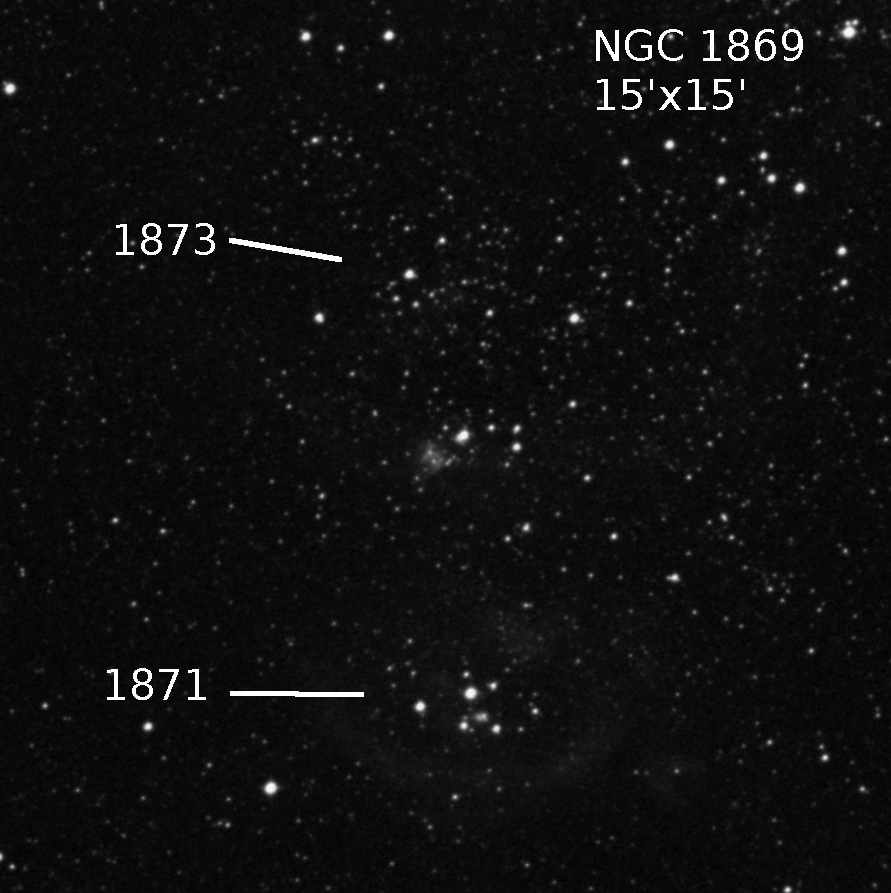LMC Observations Chart 5
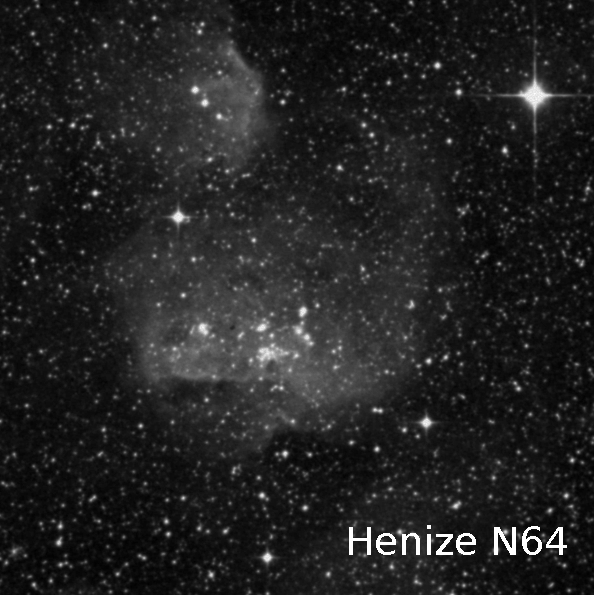
| Object | Charts | Notes | Links |
| Henize Emission Nebula N64 5 37 0 -66 21 3 | 135X This nebula is marked in three parts. It appears to have two very obvious separated sections – N64C to the north and N64 A&B to the south, closer to 63 Dor. The distinction between parts A & B is not obvious. Scattered throughout the nebula complex is an ear- shape of resolvable stars against a similar shape of soft nebulosity. Appears to span about 10’x5’. 175X Not much changes. With a UHC filter, there is a slight dark patch between parts A & B but not really enough to make them 2 sections visually. The ear shape remains obvious but the space enclosed by the ear looks more milky than without the filter.
| Finding of large numbers of pre-main sequence stars in LH95(N64) |
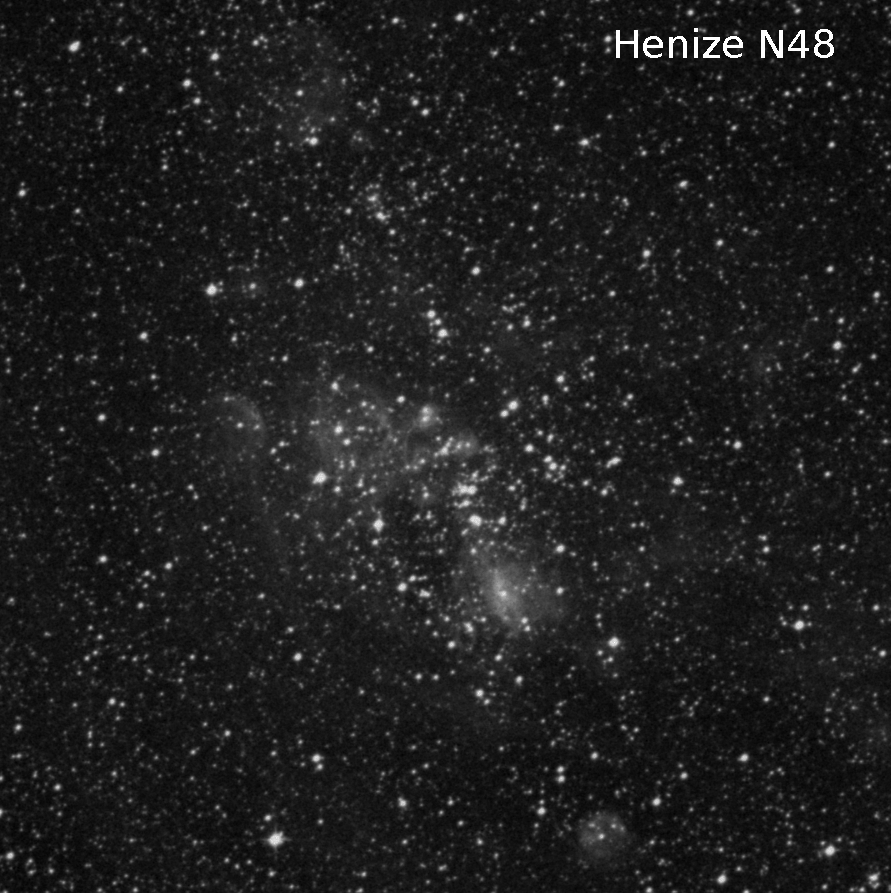
| Object | Charts | Notes | Links |
| Henize Emission Nebula N48 | 175X A large and complex area of nebulosity and stars. The edges are quite hard to define, but the bulk of it looks at least 10’x7’. It is elongated N-S and has a central patch of stars and haze surrounded by a wider darker region and then an outer elliptical ring of stars and haze. With UHC filter the dark ring around the brighter centre is less distinct as is the tract of nebulosity to the south. Quite interesting and impressive.
|
|
15'x15'
| Object | Charts | Notes | Links |
| Henize Emission Nebula N49 (supernova remnant) 5 26 1 -66 5 3 | 175x Irregular nebulosity, possibly triangular about 3’ across and some dark lanes within. A little fainter and thinner with UHC filter
| Hubble image as Astronomy Picture of the Day 1965 article about supernova remnants including N49 and their role in star formation |

| Object | Charts | Notes | Links |
| Henize Emission Nebula N50 5 25 56 -67 9 56 | 135X Quite hard to find the edges of this soft, patchy glow which is just to the north of NGC 1974 complex. Contains spattering of about a dozen resolvable stars. Slightly wider at the southern end. Reminiscent of a tree trunk with its base at the south, thinning as it heads north. At the northern end is a brighter small knot. 175X Appears more like it has 2 parts, the northern one being round and irregular and this is actually N50. UHC filter confirms this and shows N50 connected by a thin strand of nebulosity connecting it to a y-shaped southern section wider E-W. The whole patch looks about 10’ N-S x 4’ E-W and the northern section (N50) appears 3’ across. The southern part is about 3’ across also.
|
|
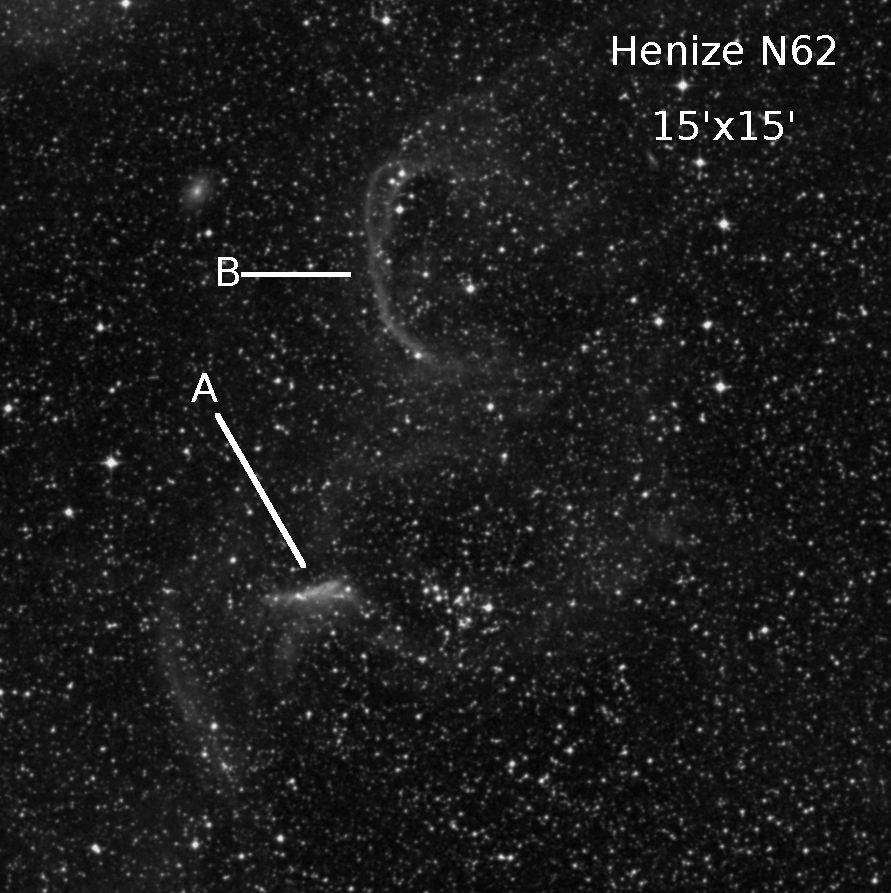
| Object | Charts | Notes | Links |
| Henize Emission Nebula N62 5 34 38 -66 14 16
| 135X This nebula is in two obvious sections A to the south and B to the north. N62A is a thin E-W ellipse of luminance and a few resolvable stars. The nebulosity darkens on the northern side of the nebula in the centre section so it looks like a small chunk has been taken out of it. Appears about 8’x3’. N62B is a very faint thin N-S strand of nebulosity with just a few resolvable stars, looks about 10’x2’. 175X Part A becomes more distinct but B remains quite faint. With UHC filter Part A looks like a mini version of NGC 253. 62B stays much the same.
|
|
These are my own observation notes. Some notes by much more experienced and eloquent observers are available on the internet and I will endeavour to provide links to such reports as I track them down. I hope to complete observation notes on all the objects listed on the charts for both Large and Small Magellanic Clouds and to provide links alongside each of these notes to relevant web articles and to the objects on the charts. Hence this section of my own tabulated notes, which will be revised as I expand and improve my observations. If you have your own observation notes on Magellanic Cloud objects, please email me at patrick@cloudsofmagellan.net.au as I would love to post them on this site. Data for NGC and IC objects are from the NGC/IC project and those for other objects are from the ASNSW's presentation of catalogues revised and summarised by Mati Morel. The Digitised Sky Survey images have been downloaded from the Space Telescope Science Institute's web site and are 5'x5' unless the object is larger than this.
| Object | Charts | Notes | Links |
| NGC 1867 Open Cluster 05h 13m 42.5s -66º 17' 39" Dia 1.3' Vmag 13.4 | 175X Quite a faint even glow, very hard to find the soft edges, no distinct core, just a gradual fading from the centre to the darkness around. About 1’ dia. but hard to tell
|
|
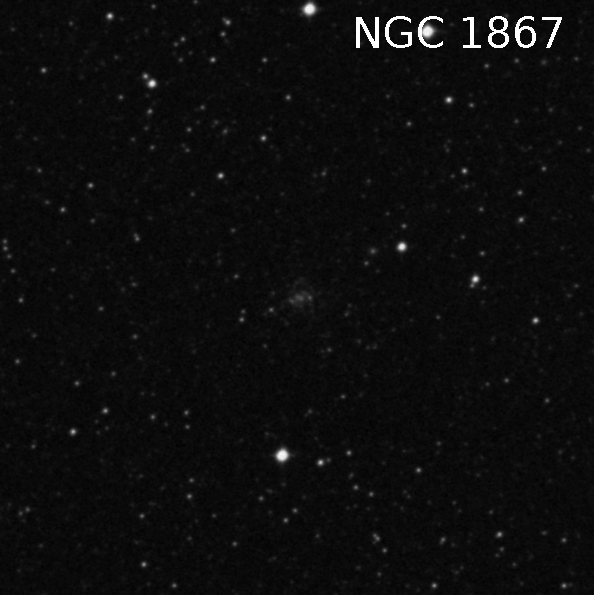
| Object | Charts | Notes | Links |
| NGC 1871 Open Cluster + Emission Nebula 05h 13m 51.8s -67º 27' 10" Dia 2.1' Vmag 10.1 | 175X About 7’ south of the centre of 1869 this is a small lens shaped group of stars enclosing a patch of nebulosity. Brightens with UHC against broad area of haze and looks larger again, about 3’. Steve Gottlieb: 13.1" (2/20/04 - Costa Rica): at 105x, this is a small group of stars in the LMC, 4 stars are resolved in nebulosity. N1873 lies 7' N and N1864 is 12' SW.
|
|
| Object | Charts | Notes | Links |
| NGC 1869 Open Cluster + Emission Nebula 05h 13m 56.4s -67º 22' 41" Dia 14' | NGC 1869 and its sub groups NGC 1871/73 and SL 363. I recognise NGC 1871 by the NSOG’s description of a v- shaped asterism with its point towards the east. The complex itself is about 20’ long and 15’ wide - strewn with stars and the three sub-clusters and with Theta Dorado in the field, it is a very impressive sight. Steve Gottliebs notes: 13.1" (2/20/04 - Costa Rica): fairly faint, hazy glow around a mag 10 star with a couple of mag 12 stars close W. N1873 lies 2.7' N with N1871 4.4' S. In Herschel's first observation (sweep 658), he described this object as "a fine L cluster of scattered stars which fills the field. The point taken is the middle of 3 groups [including N1871 and 1873] in the most condensed part." So, he was referring to the entire field as N1869. Located 11.5' S of mag 4.9 Theta Doradus. Jenni Kay: "I am confident the small cluster centrally positioned between N1871 and N1873, being 2.5' in size is not JH's cluster. The whole star group is attractive enough to warrant it's own designation. ...the small OC was used to measure a position only for the whole group which is the true N1869 JH cluster. (from NGC/IC Project)
|
|
